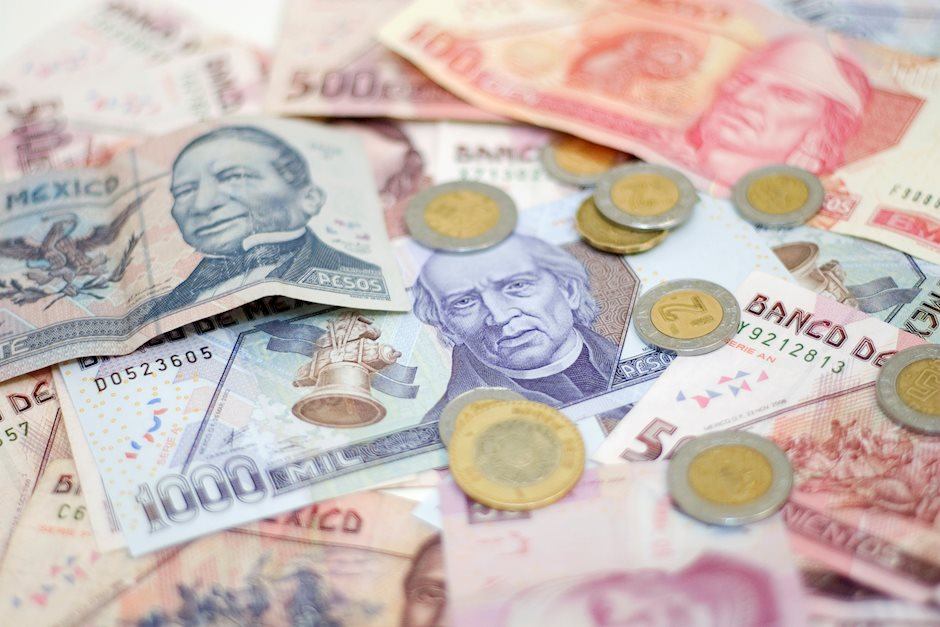Created
: 2025.01.07














![]() 2025.01.07 02:42
2025.01.07 02:42
The Mexican Peso begins the week positively, appreciating against the US Dollar on Monday after The Washington Post reported that Trump aides are only considering tariffs on "certain sectors", a less harsh policy than floated earlier. Nevertheless, US President-elect Trump said the story "incorrectly states that my tariff policy will be pared back." Despite this, the USD/MXN tumbled over 1.50% to trade at 20.28 at the time of writing.
Market sentiment is upbeat, yet traders remain wary of Trump's remarks on his social network. US equities wavered after The Washington Post article, yet they are still holding their gains following Trump's latest remarks.
Recent data revealed that US business activity in the services segment decelerated in December, based on data from S&P Global. Additionally, Factory Orders in November shrank after strong figures in October.
Meanwhile, Federal Reserve Governor Lisa Cook revealed that the US central bank could adopt a cautious approach with additional interest rate cuts, given a solid economy and inflation that is stickier than expected.
Across the south of the border, the Instituto Nacional de Estadistica Geografia e Informatica (INEGI) announced that Mexican consumers turned pessimistic near the end of 2024 as Consumer Confidence fell for the second straight month in December.
The USD/MXN is falling sharply, testing the 50-day Simple Moving Average (SMA) at 20.26. The Relative Strength Index (RSI) turned bearish, opening the door for further Mexican Peso strength. If sellers push prices below the latter, they could challenge the 20.00 figure. On further weakness, the pair could drop to the 100-day SMA at 19.89, followed by the 19.50 figure.
On the other hand, if buyers stepped in and lifted the USD/MXN above 20.50, the next key resistance would be the year-to-date (YTD) high of 20.90 before testing 21.00. A breach of the latter will expose the March 8, 2022 peak of 21.46.
The Mexican Peso (MXN) is the most traded currency among its Latin American peers. Its value is broadly determined by the performance of the Mexican economy, the country's central bank's policy, the amount of foreign investment in the country and even the levels of remittances sent by Mexicans who live abroad, particularly in the United States. Geopolitical trends can also move MXN: for example, the process of nearshoring - or the decision by some firms to relocate manufacturing capacity and supply chains closer to their home countries - is also seen as a catalyst for the Mexican currency as the country is considered a key manufacturing hub in the American continent. Another catalyst for MXN is Oil prices as Mexico is a key exporter of the commodity.
The main objective of Mexico's central bank, also known as Banxico, is to maintain inflation at low and stable levels (at or close to its target of 3%, the midpoint in a tolerance band of between 2% and 4%). To this end, the bank sets an appropriate level of interest rates. When inflation is too high, Banxico will attempt to tame it by raising interest rates, making it more expensive for households and businesses to borrow money, thus cooling demand and the overall economy. Higher interest rates are generally positive for the Mexican Peso (MXN) as they lead to higher yields, making the country a more attractive place for investors. On the contrary, lower interest rates tend to weaken MXN.
Macroeconomic data releases are key to assess the state of the economy and can have an impact on the Mexican Peso (MXN) valuation. A strong Mexican economy, based on high economic growth, low unemployment and high confidence is good for MXN. Not only does it attract more foreign investment but it may encourage the Bank of Mexico (Banxico) to increase interest rates, particularly if this strength comes together with elevated inflation. However, if economic data is weak, MXN is likely to depreciate.
As an emerging-market currency, the Mexican Peso (MXN) tends to strive during risk-on periods, or when investors perceive that broader market risks are low and thus are eager to engage with investments that carry a higher risk. Conversely, MXN tends to weaken at times of market turbulence or economic uncertainty as investors tend to sell higher-risk assets and flee to the more-stable safe havens.
![]()
Created
: 2025.01.07
![]()
Last updated
: 2025.01.07

FXStreet is a forex information website, delivering market analysis and news articles 24/7.
It features a number of articles contributed by well-known analysts, in addition to the ones by its editorial team.
Founded in 2000 by Francesc Riverola, a Spanish economist, it has grown to become a world-renowned information website.
We hope you find this article useful. Any comments or suggestions will be greatly appreciated.
We are also looking for writers with extensive experience in forex and crypto to join us.
please contact us at [email protected].
Disclaimer:
All information and content provided on this website is provided for informational purposes only and is not intended to solicit any investment. Although all efforts are made in order to ensure that the information is correct, no guarantee is provided for the accuracy of any content on this website. Any decision made shall be the responsibility of the investor and Myforex does not take any responsibility whatsoever regarding the use of any information provided herein.
The content provided on this website belongs to Myforex and, where stated, the relevant licensors. All rights are reserved by Myforex and the relevant licensors, and no content of this website, whether in full or in part, shall be copied or displayed elsewhere without the explicit written permission of the relevant copyright holder. If you wish to use any part of the content provided on this website, please ensure that you contact Myforex.
Myforex uses cookies to improve the convenience and functionality of this website. This website may include cookies not only by us but also by third parties (advertisers, log analysts, etc.) for the purpose of tracking the activities of users. Cookie policy